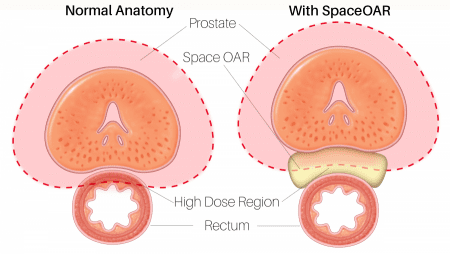Prostate cancer is the second most common cancer occurring in American men, according to the American Cancer Society. Approximately 174,600 men will receive a prostate cancer diagnosis in 2019 and, unfortunately, more than 31,000 will lose their lives. This reflects an 11 percent risk for all men, but it affects demographics differently. African American men are more likely to develop prostate cancer, and 60 percent of cases are diagnosed in men over age 65. Despite the prevalence, prostate cancer has a relatively low mortality rate and most men survive.
Despite the high survival rate, seeking treatment is not always an easy decision to make when it comes to managing side effects after treatment. Radiotherapy is the most standardized form of prostate cancer treatment and it can be used if the cancer returns after surgery. As with any form of radiation, nearby tissues may be subject to high-intensity energy and, given the prostate’s proximity to the bowel, it could cause other issues. Radiation therapy for prostate cancer can cause side effects such as rectal pain and bleeding.
To reduce exposure to radiation, radiation therapy previously involved inserting a balloon between the rectum and prostate to help mitigate exposure to radiation. This balloon typically required regular replacement until the end of treatment. However, new advances in technology have led to the development of SpaceOAR™, a gel that is used in place of balloons to reduce radiation exposure to the rectum.


